Individualism was something I was able to find at an early age.
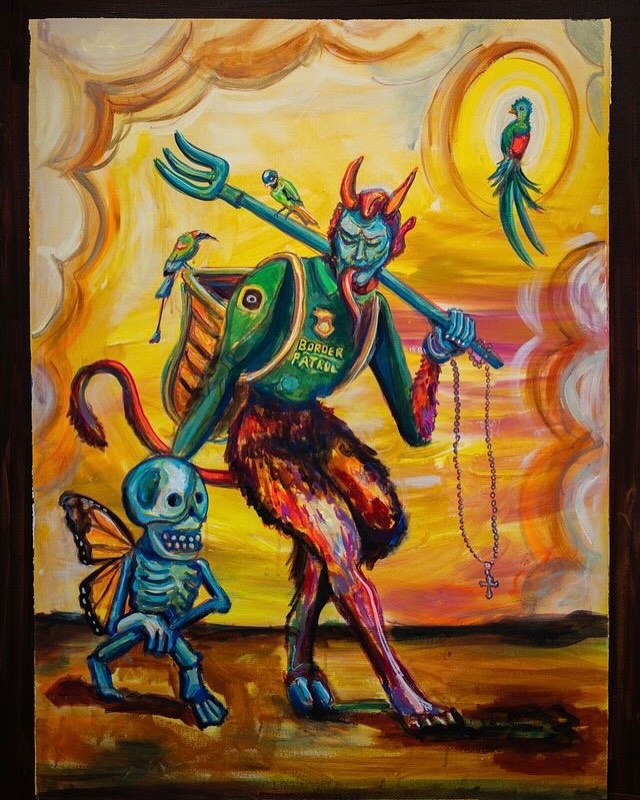
I grew up in a punk house on the east side of San Antonio, Texas. I saw a lot of addiction and the effects of the prison industrial complex firsthand. Finding art taught me to be more confident in myself, and how to extend myself to others.
My mom was a big activist in the community. She was a part of Food Not Bombs, and since I was 12 or 13 she’d host bands at the house. I got to grow up around a lot of punk, death metal, folk punk… Getting to explore very alternative lifestyles taught me I didn’t necessarily need to conform to what society wants. A lot of her friends did graffiti and tattoos, so I was able to find mentors in art without having to travel too far.
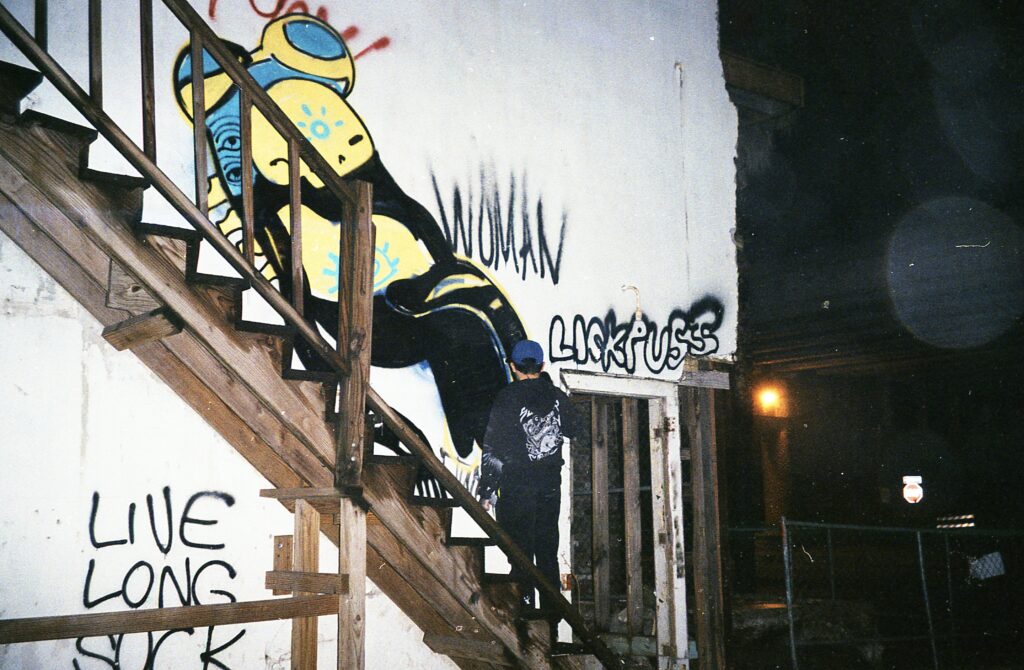
Graffiti teaches you to think outside the box and to be unapologetic in how you create. I learned a lot from vandalism, which led me to incorporate a sense of rebellion in my work.
I consider myself entering more of a contemporary art world right now, but I still keep to those roots. Whether it’s color palettes or the larger statement behind a piece, there’s a conscious effort behind my work to challenge the establishment as much as possible.
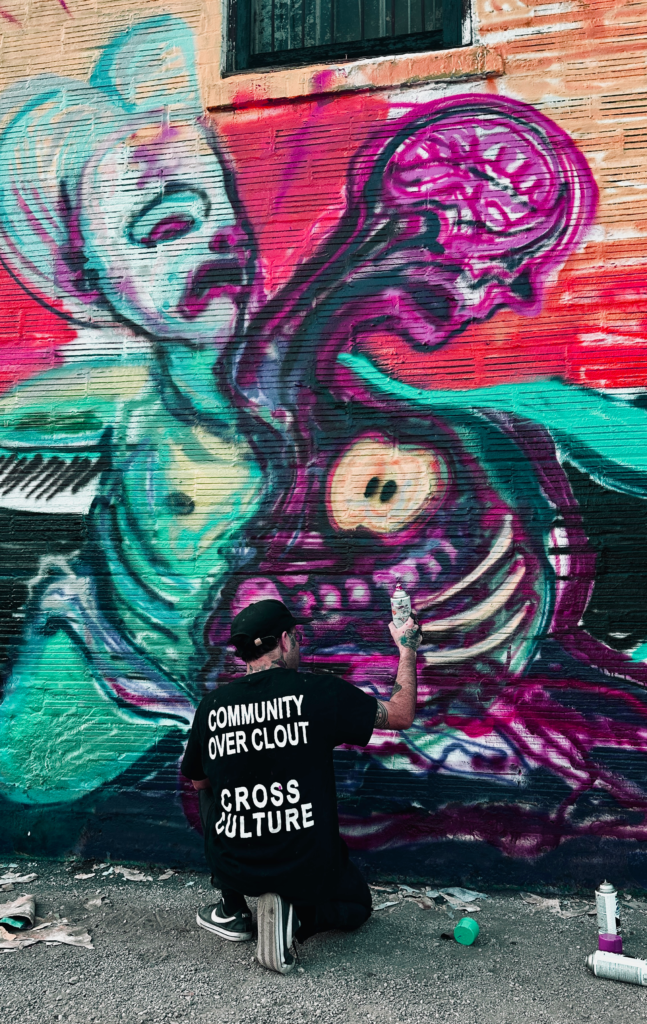
One of my earliest collaborators was one of my mom’s friends. She used to build piñatas and things for our birthdays and we’d always encourage her to further her craft and do sculptures, to take on bigger projects. Coming from that background rooted me in open-mindedness.
I’ve experienced alienation for looking different. I have face and hand tattoos. So people kind of assume that I’m rowdy off the jump, but I’m a super laidback guy, really. There’s been a prejudice and process to navigate getting museums to look my way for that.
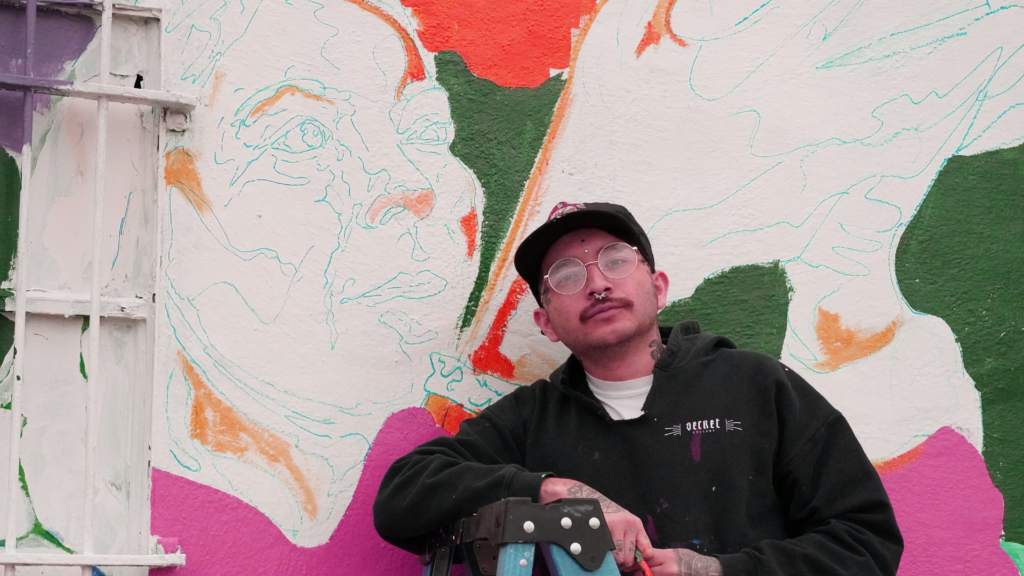
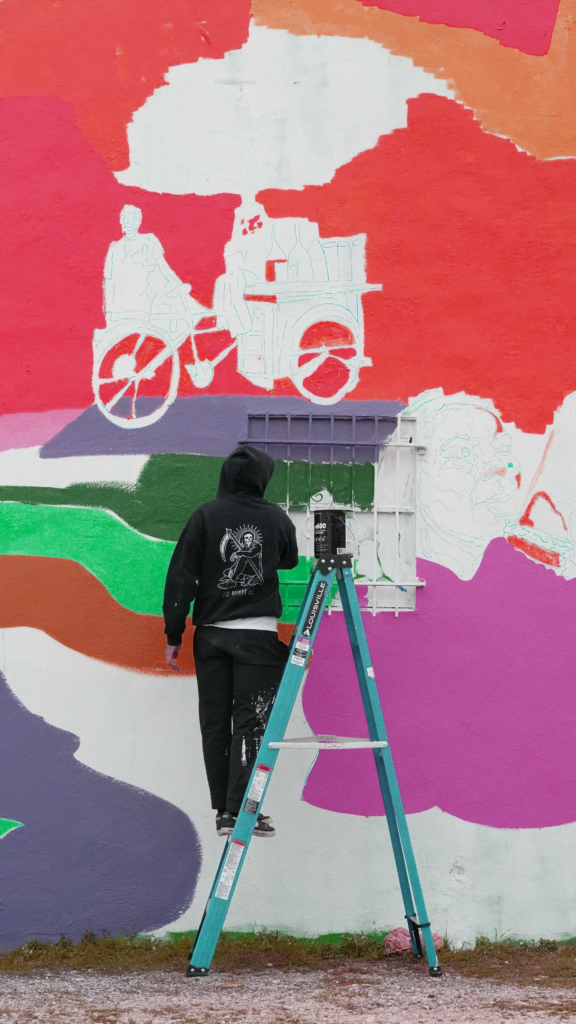
I had this really funny interaction at the border in Edinburg, right next to Mexico. I was doing a mural for some festival when I stepped back and saw a lady taking pictures with my piece. She sees me and yells at me to get out of the way for her photo; I looked at her and just shook my head, continuing to paint the wall, and told me, “Oh, I didn’t realize you were the artist! I’m so sorry. Can I take a selfie with you?” I said F*ck no! You know how prejudiced of a person you have to be to react and push boundaries like that? All because I looked somewhat alternative, I guess.
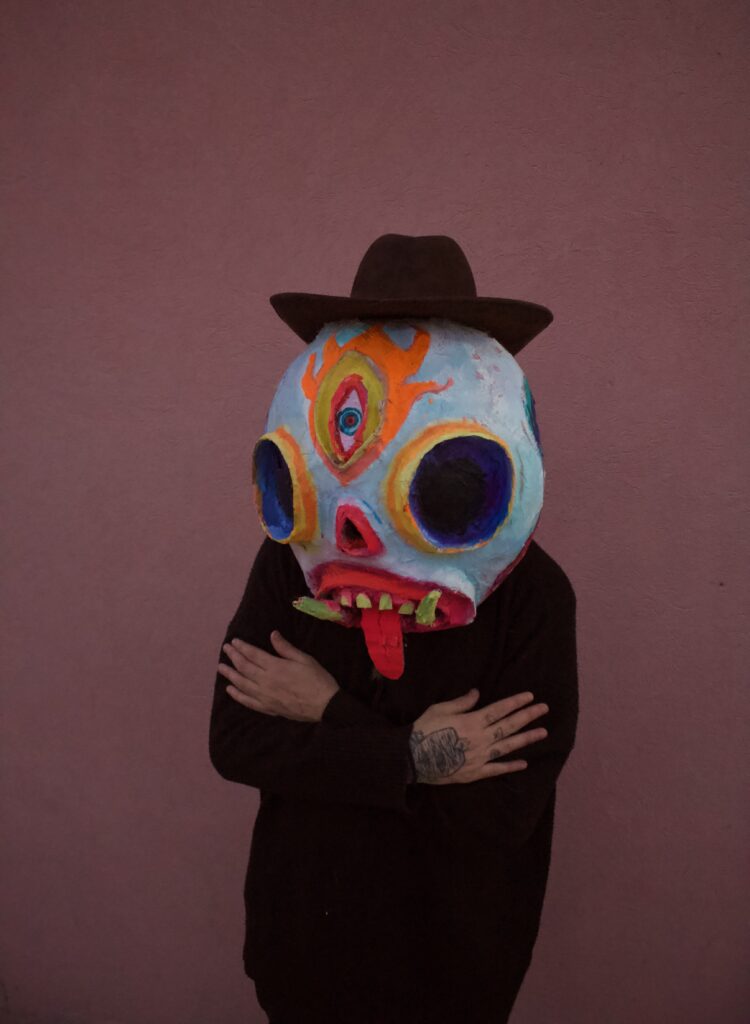
The way I combat stereotypes is by working twelve times harder than everyone else.
People are different and that’s all good. At the end of the day, I’m just gonna prove my character with my actions and work ethic. Most of the time that’s worked.
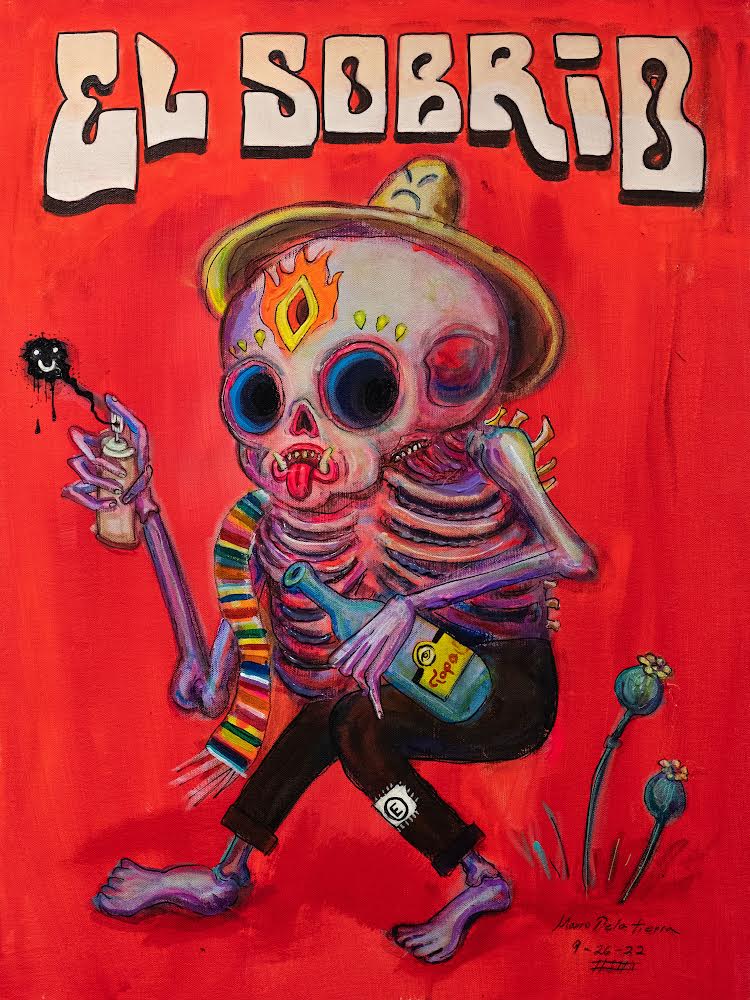
I paint a lot of Impressionism; to me, that means not necessarily capturing the technicality of someone’s portrait, but focusing on their broader spiritual essence. I try to depict more of someone’s inner child because I feel like that’s something people don’t get to experience very often. A lot of the subjects I paint tend to have gone through some seasons of trauma or rough experiences because those are the stories that I want to highlight. I incorporate a lot of elders, trans folk, victims of the prison industrial complex…
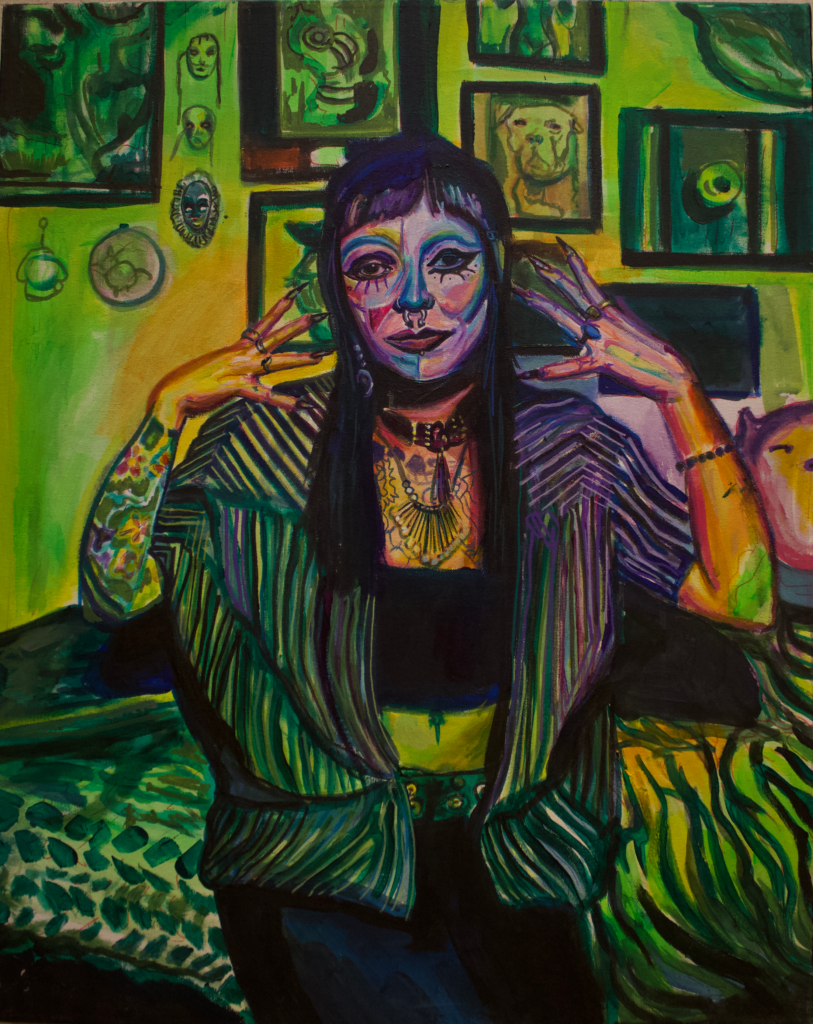
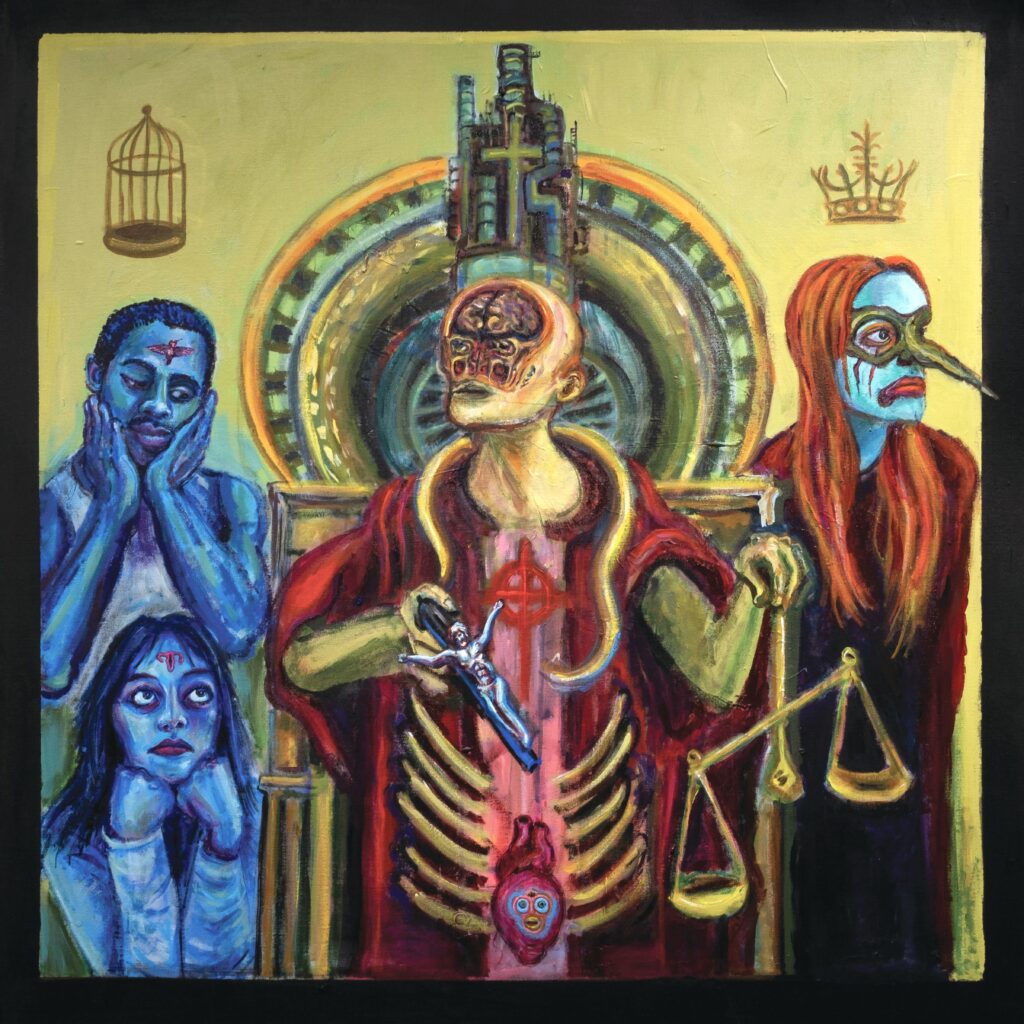
San Antonio’s east side is an impoverished, gang-occupied, marginalized area of the city that I’m now living long enough to see become gentrified. Growing up in that area, seeing my father in and out of jail most of my life… It got to the point where the only way he could stay healthy and sober was if he was in a jail cell. If he was outside of that environment, it was petty crime and falling back into addiction. As I started getting older I started repeating a lot of similar patterns.
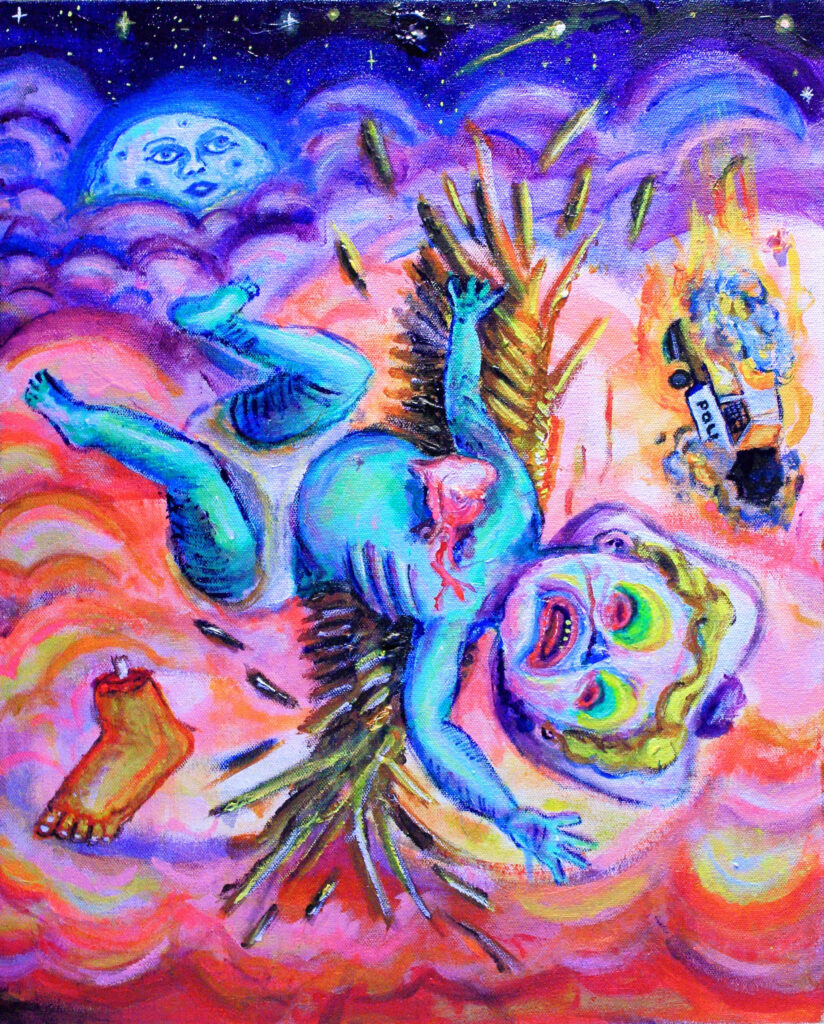
Around 22 my artwork was very destructive. It was mostly spray paint mediums with acrylic here and there. I feel like it was a lot more vulgar, politically incorrect, or just blatantly in your face. I was dealing with a lot of nihilism so I think my work was reflecting a doomsday state of mind.
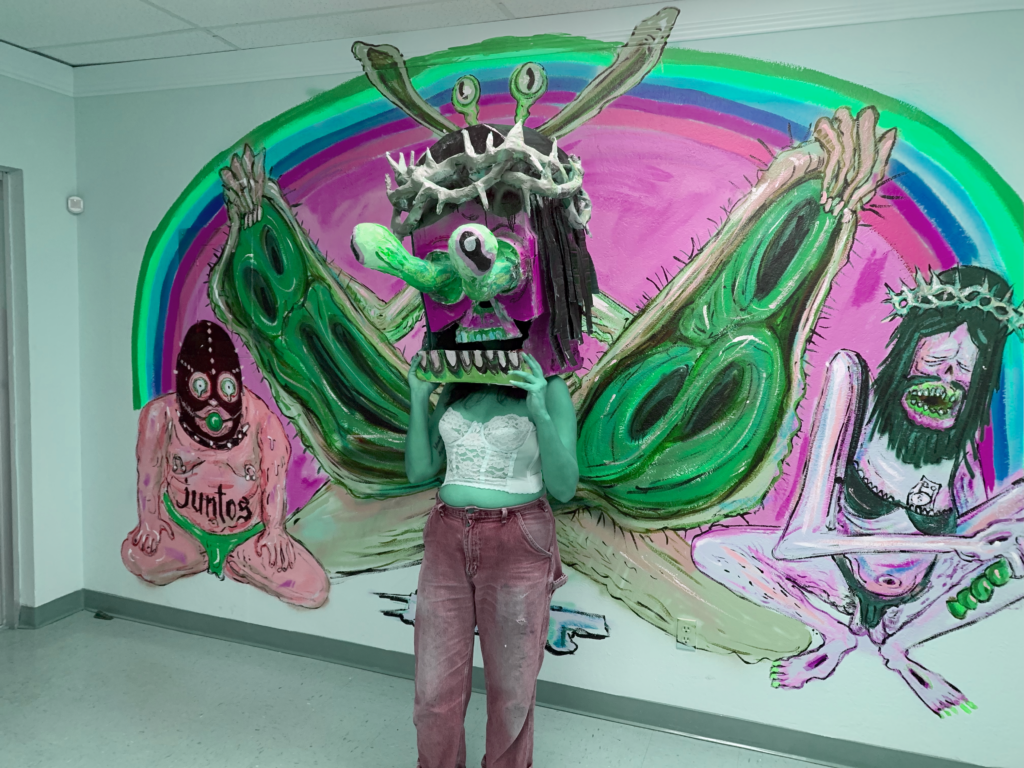
I was getting arrested for graffiti and started reflecting on whether that cycle was all I would do. And for a long time I felt an expectation that it was all I could do. I felt like I was just gonna end up just being a petty criminal, surviving as I could. I feel like a lot of my childhood friends felt that way too. It’s a systemic issue that keeps people in poverty.

I’ve been on this journey of sobriety for about seven years now and have been doing art full-time for the same period.
Sobriety and the cycles that convicts and the people around them face are vital subjects I like to paint about because I don’t think they’re talked about enough, especially in Chicano communities. Being vulnerable is such an important thing to do because it’s the starting point for us to break out of patterns.
I guess everything I act on always goes back to community empowerment. We have to educate ourselves and remind each other that we’re capable and worthy.
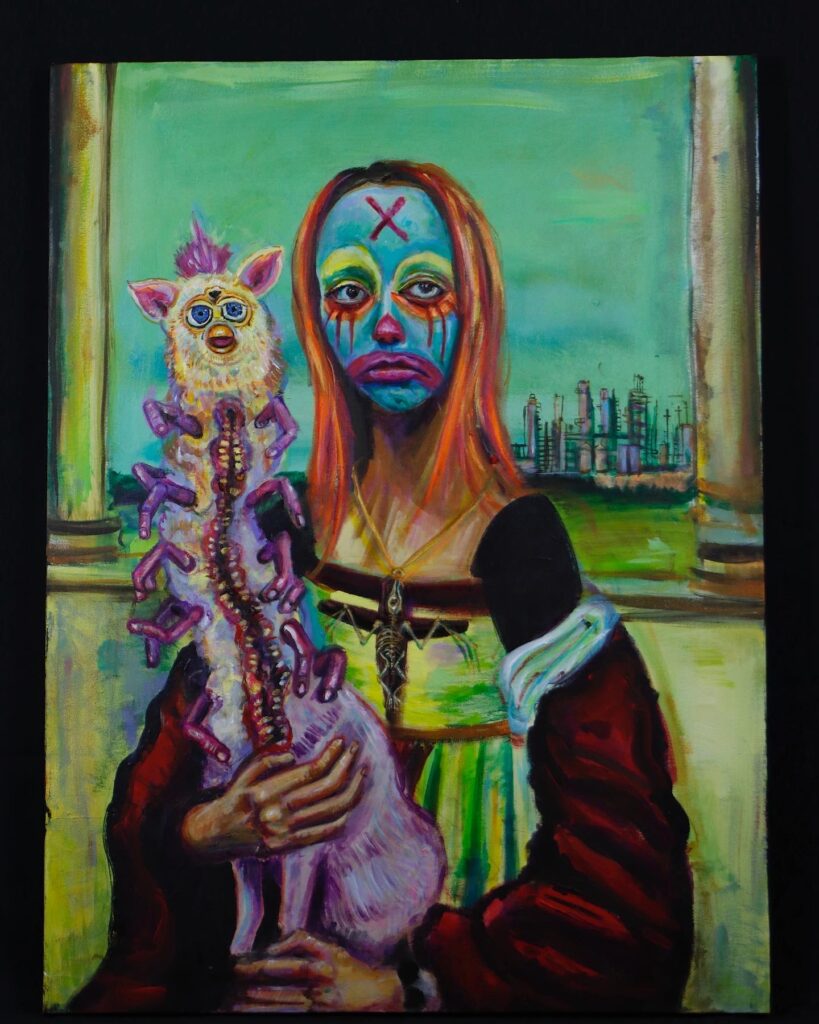
I grew up under the misconception that art was only for the upper class. Graffiti was my first introduction to public art, accessible to everybody. So I think that that’s why I moved in the direction of wanting to do murals. I get a lot of creative freedom which is not the norm, and something I’m very fortunate to have. I’ve done murals for environmental organizations around preserving the Rio Grande, but have also painted luxury lofts and other businesses. I always try to incorporate stories and mostly pull from Indigenous folktales for inspiration.
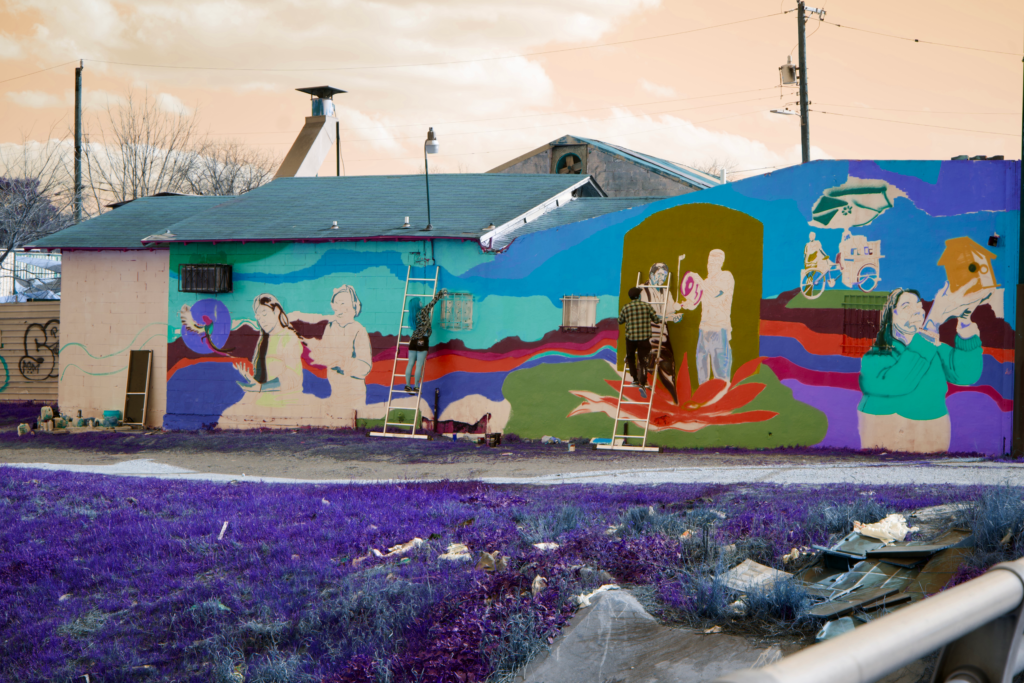
One of the biggest affirmations as an artist that I’ve found was within a project I did with the city last year. We interviewed 30 people from San Antonio who had stories of resistance, resilience, and triumph. Getting to know all these stories of people who were in recovery and have been sober for 10, 20 years… When you’re in addiction, you struggle with self-worth. I think getting to see their portraits and stories highlighted at the Central Library downtown was such an empowering event for everyone because it’s a reminder that we’re not defined by our past, but by the intentions we have towards the future.
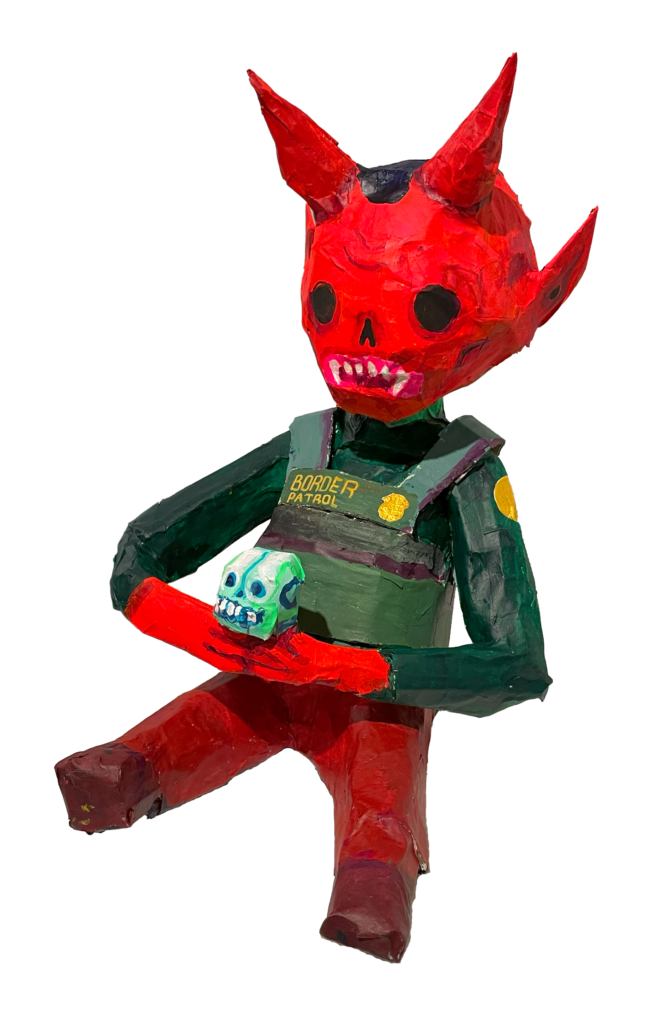
Right now specifically, I’m working on the biggest mural that I’ve done by myself so far. I teamed up with an organization called Bark, which provides clean and reusable needles for people in addiction. Getting to work with a harm reduction organization has been very gratifying because, for a long time, I felt like I was fighting to prove something to myself.
Since the project is on the west side of San Antonio, a lot of the subjects I incorporated are people from the neighborhood. A doctor, a reporter, an artist, a retired preschool teacher… I wanted the mural to have a narrative around hope because I feel like that’s another thing we don’t embrace enough.
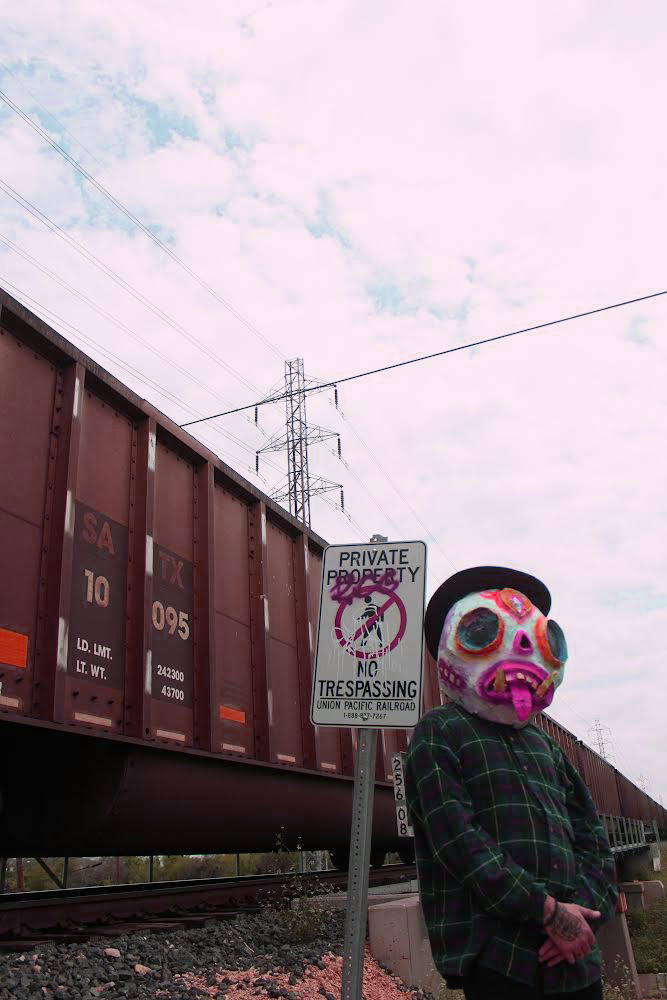
Seven years ago, I wouldn’t have been able to take on half the opportunities I currently have. As I’ve worked at improving my painting, I’ve also realized what I’m really here to do as an artist: continuing to take part in archiving history and culture, especially culture that’s been marginalized. I was debating myself the other day if I’ve been turning into a sort of… Helplessly optimistic type <haha>. But I really believe sobriety just taught me to have more love for others, and myself. I want to continue creating more space to share while reminding myself to stay modest. I think you should use these tools, however you create, as a form of empowering culture the most you can.
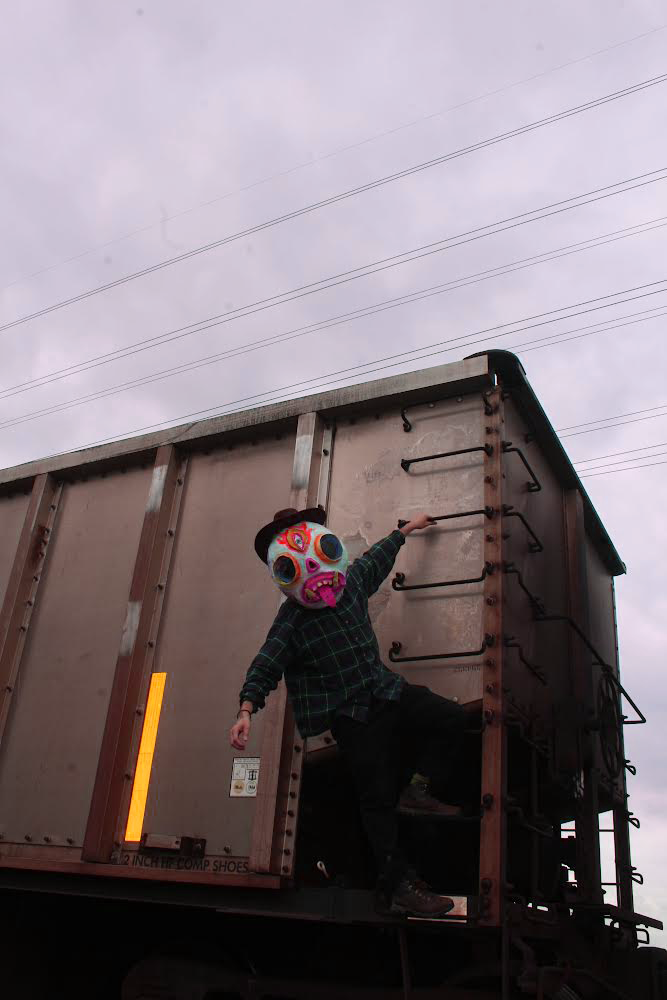
-Mauro De La Tierra for Dead Relatives.